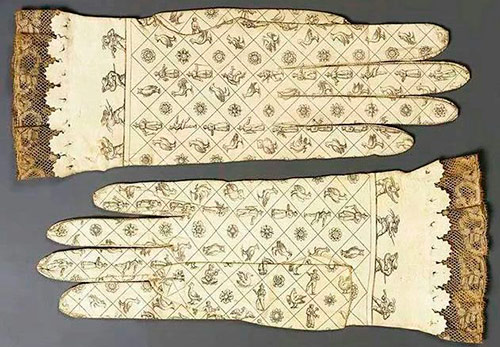Beautiful dresses
Empire style in 19th century clothing and Empire style dresses
The Empire style in art and costume is associated with the name of one person - Napoleon Bonaparte. During the reign of Napoleon, this style was born. And it is precisely with the defeat of Napoleon that the decline of the Empire style in European art is associated.
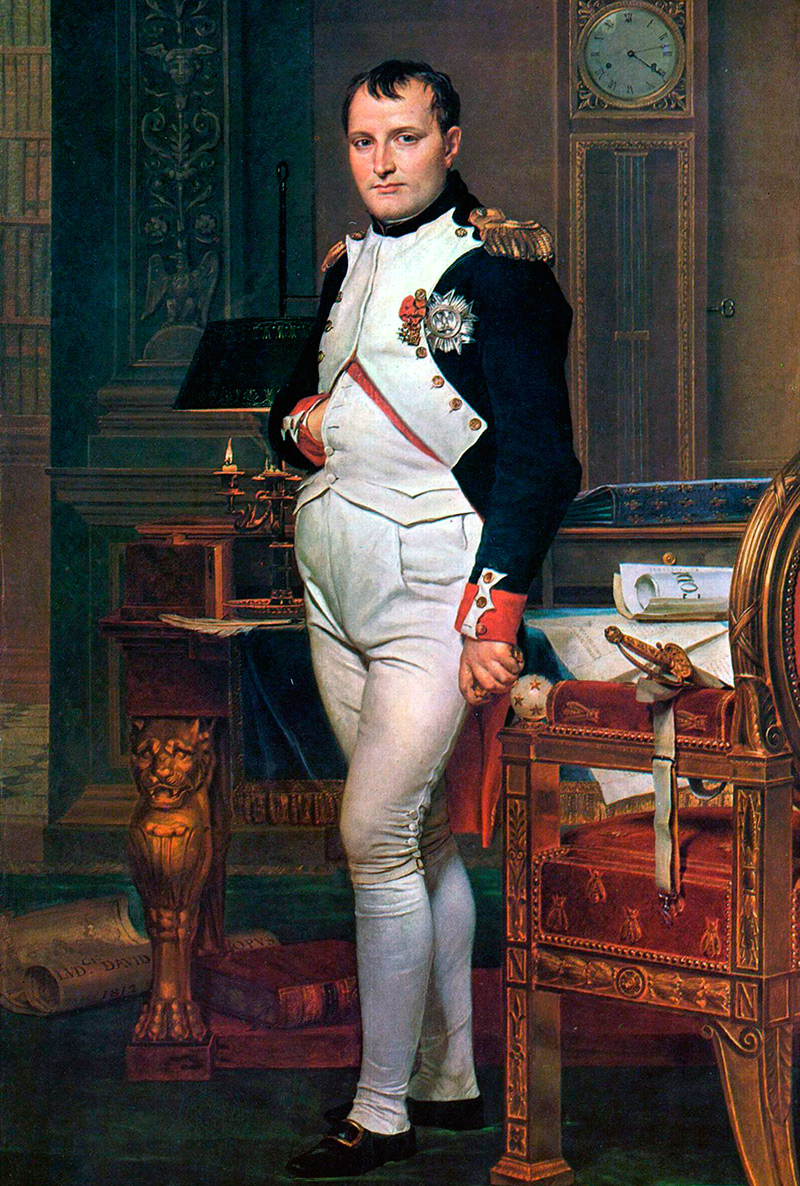
Jacques Louis David
Emperor Napoleon in his study at the Tuileries
Empire style means imperial. Napoleon believed that he was able to revive the Roman Empire, conquering and uniting all of Europe. And exactly Roman Empire style begins to manifest itself in the art of France at the beginning of the 19th century.
Columns of the Corinthian order, symmetry, marble sculptures, including ancient gods, all this is inherent in the Empire style. And even a triumphal arch appears in Paris. Like the Roman emperors who erected triumphal arches in honor of their victories, Napoleon orders the construction of a triumphal arch in honor of the victories of his "Great Army".
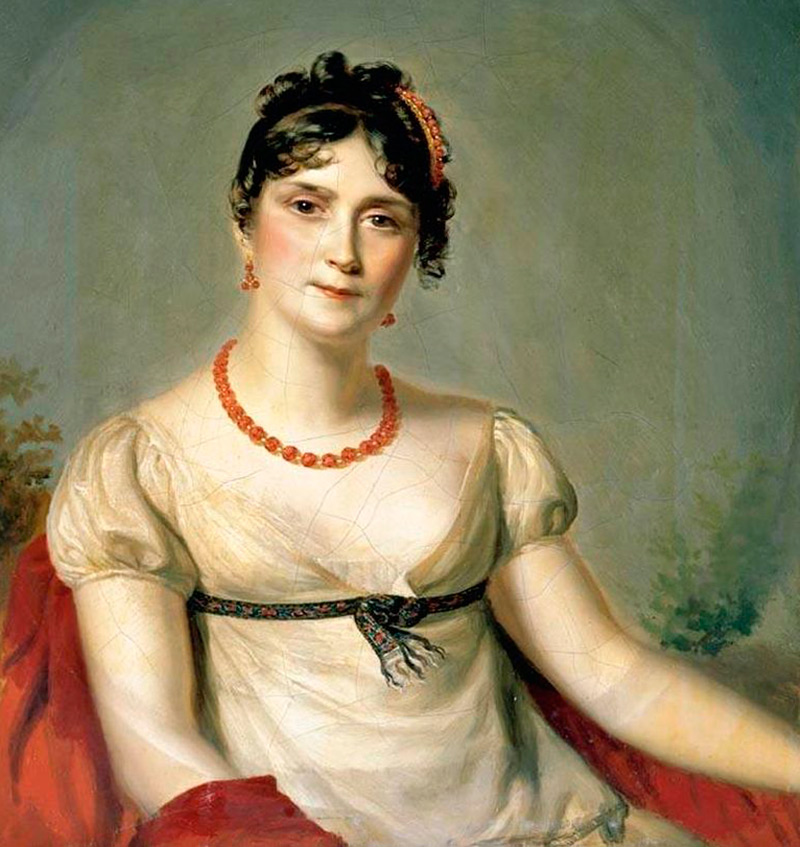
Firmin Massot
Empress Josephine
The Empire style at the beginning of the 19th century was mainly widespread in France. In parallel with it, another style of the early 19th century is developing - romanticism. And if in France there was an imperial style, then romanticism was inherent in the art of England and Germany.
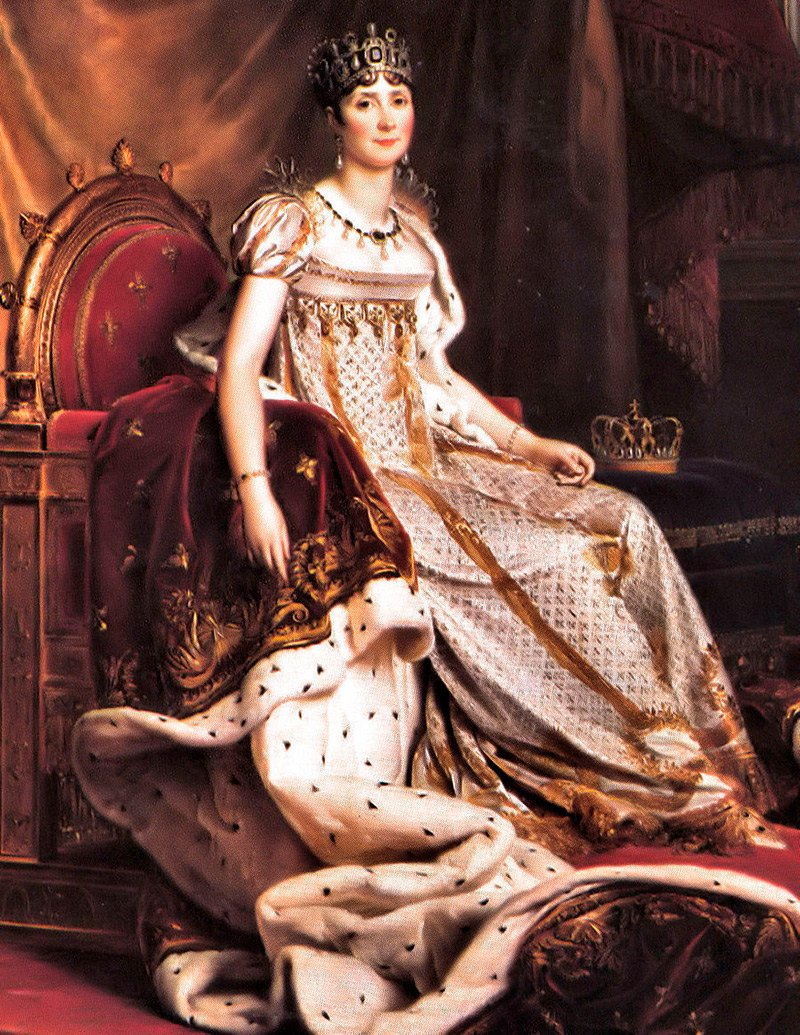
Empress Josephine - wife of Napoleon,
was considered the trendsetter in the Empire style
The only country, besides France, in which the Empire style became widespread at the beginning of the 19th century, was the Russian Empire. And this is also not surprising - Russia also claimed the role of the heir to the Roman Empire. There is such a phrase - "Moscow is the third Rome". The second Rome was traditionally considered the city of Constantinople - the capital of Byzantium. Namely, from Byzantium once Kievan Rus adopted Christianity.

V.L. Borovikovsky
Portrait of Lopukhina
Empire style in clothes
It's the same with fashion. Empire style fashion at the beginning of the 19th century was most widespread in France and in the Russian Empire.
Empire style costume, like art, was based on Roman traditions. Unlike the costume of the previous empire style - classicism, the clothes of which largely imitated the costume of Ancient Greece.
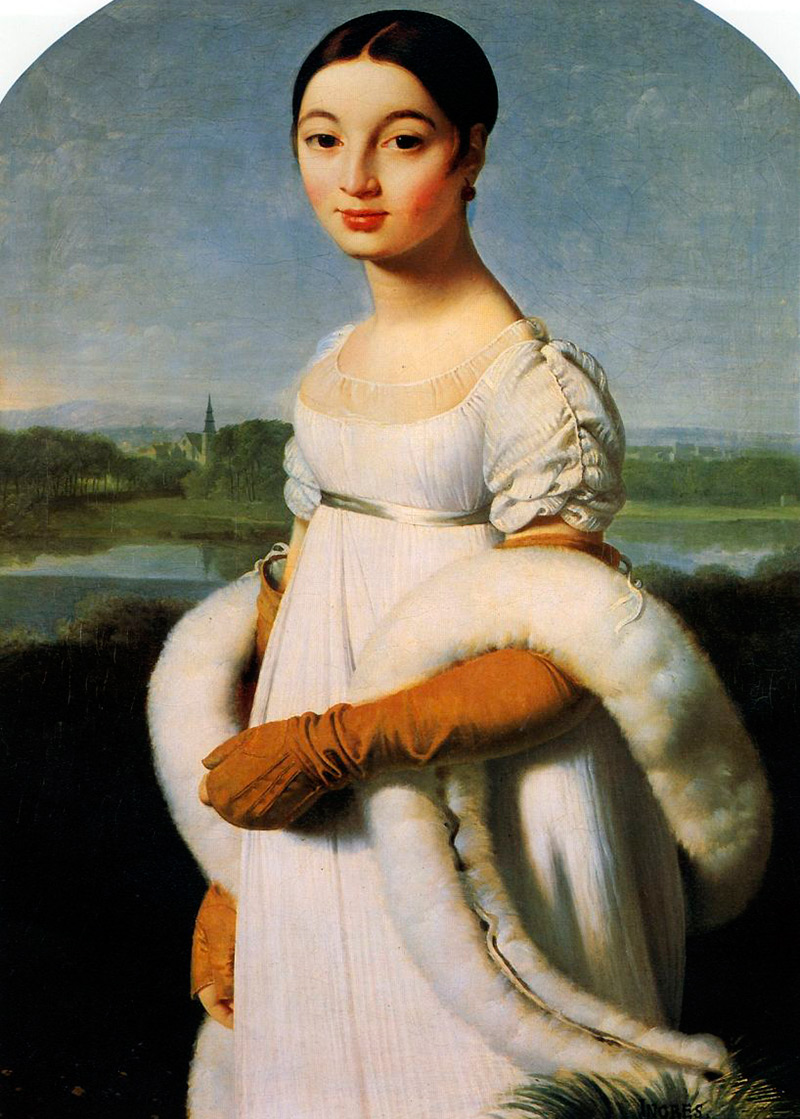
Jean Auguste Dominique Ingres
Portrait of Mademoiselle Caroline Riviere, 1805
Especially the Roman influence on the Empire style costume was noticeable in the women's dress. A shirt-cut dress, like Roman tunics, gathered in folds, so popular in ancient Greek and Roman costumes. And, of course, a high waistline, like a Roman table, which in Rome was worn only by married women.
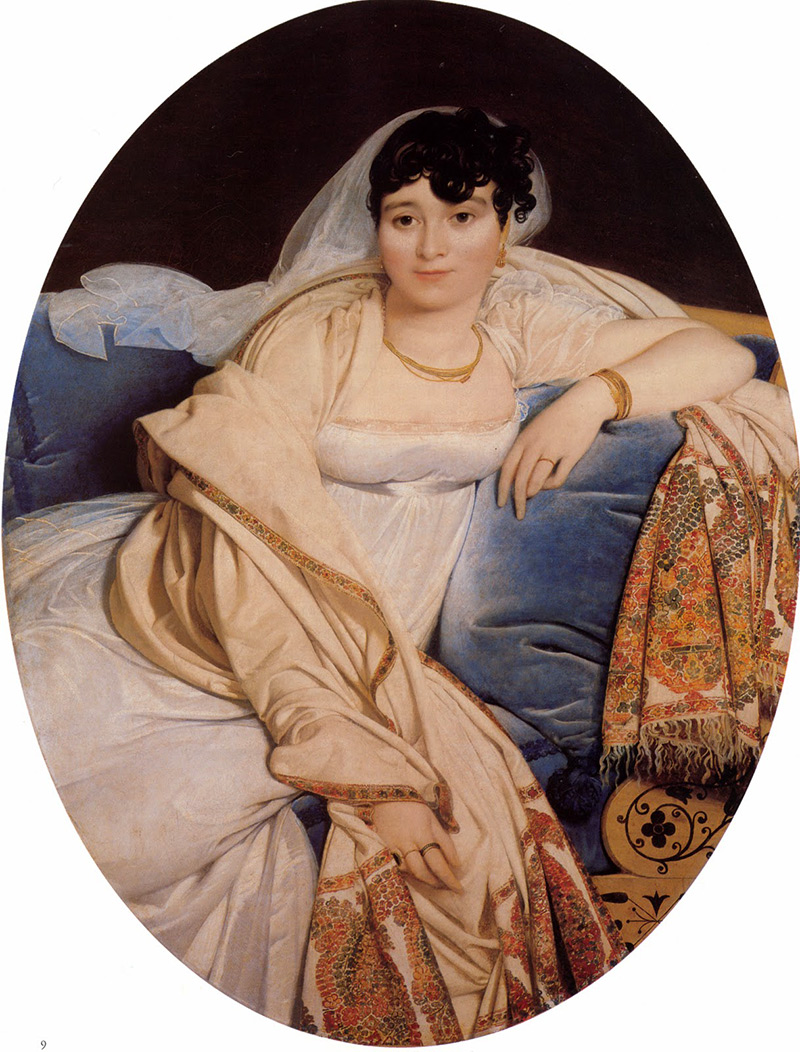
Jean Auguste Dominique Ingres
Portrait of Madame Riviere, née Marie Françoise Bibin Bloe de Beauregard, 1806
Empire style dress
The Empire style dress is a long white dress with short ball sleeves (lantern sleeves), emphasizing the shoulders, and with a high waistline, very often highlighted by a belt.
Until 1809, women did not wear corsets with Empire-style dresses. The corset went out of fashion immediately after the French Revolution at the end of the 18th century, as a relic of aristocratic fashion. However, already in 1809, corsets are back in fashion.

Jean Auguste Dominique Ingres
Portrait of Madame LeBlanc, 1823
A white, lightweight fabric, often silk, Empire-style dress in the latest fashion of the time was often worn wet so that the fabric hugs the figure and, thus, the female figure resembles the white marble columns of ancient temples.
In cold climates, this fashion has contributed to the emergence of the most real victims of fashion. In winter Petersburg, young ladies caught pneumonia, from which in those days one could easily die.
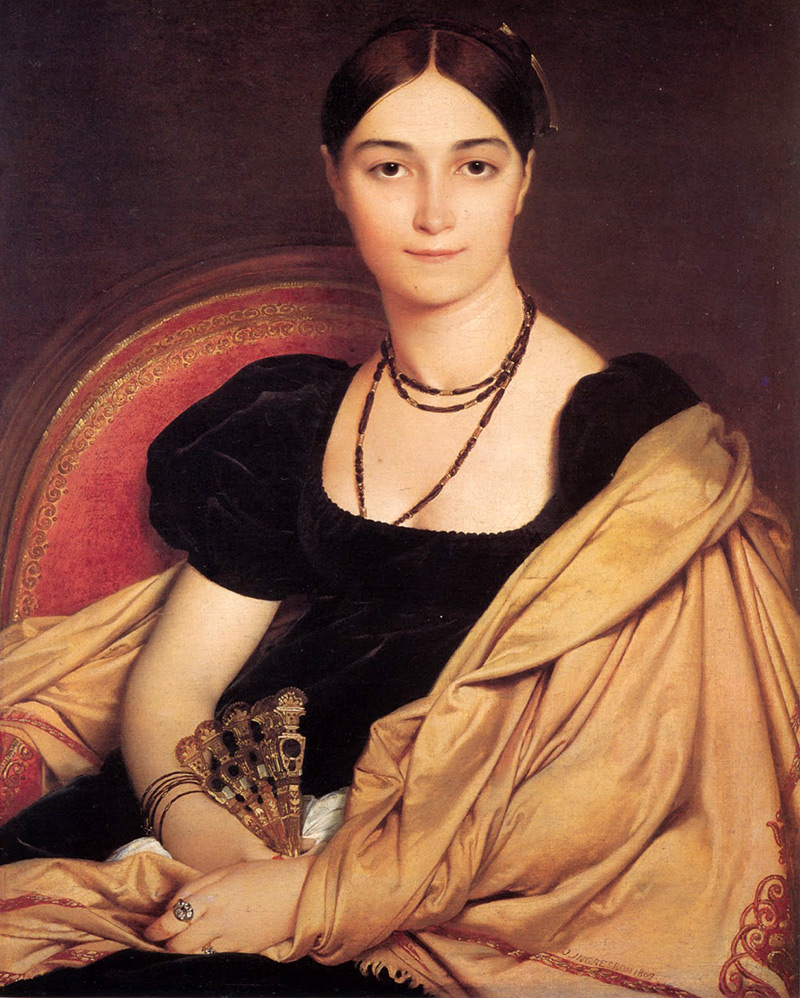
Jean Auguste Dominique Ingres
Portrait of Madame Devose, 1807
But already in the 1810s, Empire-style dresses were gradually adapting to the European climate.So, dresses begin to be sewn from denser and more expensive fabrics, for example, brocade or velvet... Dresses cease to be exclusively white, however, they are still most often monochromatic.
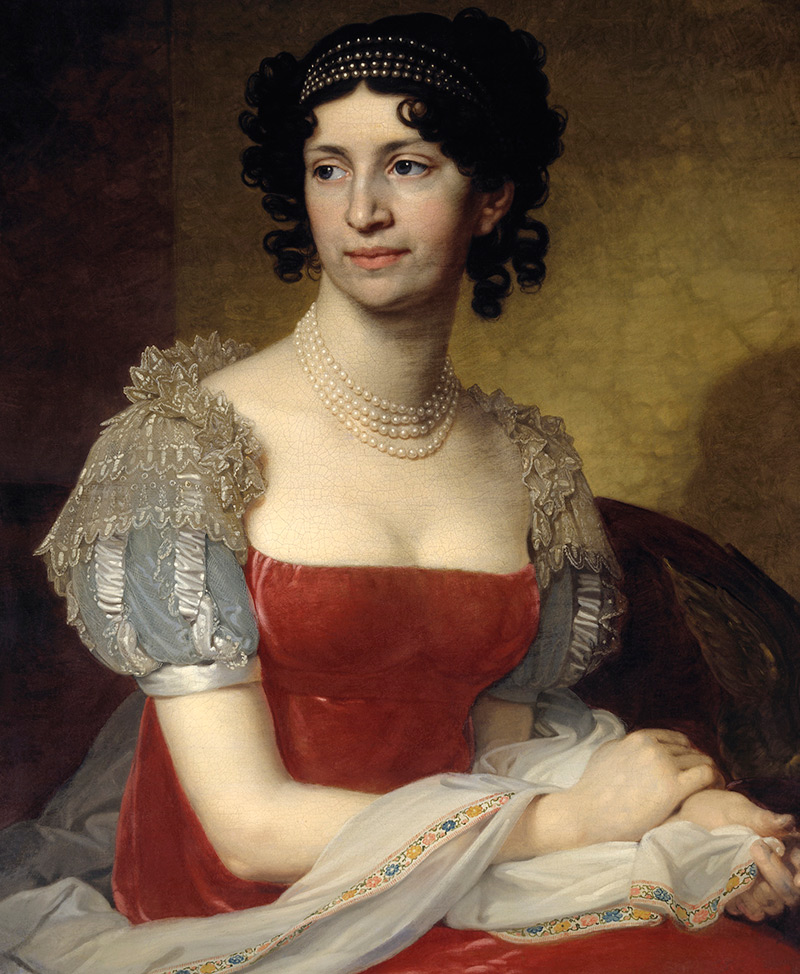
V.L. Borovikovsky
Portrait of Princess Dolgoruka, 1811
Also, dresses are decorated with embroidery. There are also options for dresses with long sleeves. In the 1810s, Empire-style dresses lost their trains, and their skirt acquired a bell-shaped, narrow shape.

Jean Auguste Dominique Ingres
Portrait of Madame Marcotte de San Marie, 1826
Over the dresses, they could wear a short jacket - Spencer or Kashmiri shawls. As in the times of Antiquity, great importance is attached to draperies. So, in those days, instead of the phrase "well dressed" a woman could be said to be "well draped." Russian fur coats are also becoming fashionable.

Jean Auguste Dominique Ingres
Portrait of Madame Tournon, 1812
Long gloves are often worn with Empire-style dresses. On the neck - a string of pearls or small beads.
As for the men's suit, its main quality since the beginning of the 19th century has become its convenience. Ruffles, lush, somewhat reminiscent of a skirt, trousers, powdered wigs, all this is a thing of the past. Fashion in the 19th century was already dictated not by aristocrats, but by representatives of the bourgeoisie. That is, business people, people who work and lead an active lifestyle.

Jean Auguste Dominique Ingres
Portrait of Philibert Riviere, 1808
So, at the beginning of the 19th century, stockings and short culottes were replaced by long trousers, pantaloons - ankle-length. These trousers are most often worn with suspenders.

Jean Auguste Dominique Ingres
Monsieur de Norvin, 1811-1812
Also, men of the early 19th century wear a white shirt with a starched stand-up collar, a colorful waistcoat and a frock coat. The coat is double-breasted, hip-length, with a high collar. Later, the frock coat is replaced by a tailcoat. A tailcoat in the 19th century was everyday clothing. It could be of various colors.
The tailcoat was most often worn with light trousers and a vest of a lighter color than a tailcoat. On the neck, men of the early 19th century wore a prototype of a tie - scarves that could be tucked behind a vest or tied in various ways, for example, in a knot or a bow.

Jean Auguste Dominique Ingres
Portrait of Edmé Boche, 1811
And, of course, many men at the beginning of the 19th century wore military uniforms. After all, do not forget that the beginning of the 19th century is the time of Napoleon and his wars in Europe. Napoleon himself also preferred to wear a military uniform, in which he was depicted in ceremonial portraits.

Paul Delaroche
Portrait of Napoleon Bonaparte
Empire style fashion had a great influence on the modern costume. So, in fact, at the beginning of the 19th century, a prototype of a modern men's suit was formed - a jacket, a white shirt, trousers, a tie. As for the women's empire style dress, even today empire dresses - light shirt-cut dresses with high waist lines are also relevant. Empire style dresses are very popular in wedding fashion.


Stills from the movie "War and Peace" 1967
And this is not surprising. These dresses suit many people. After all, Empire-style dresses can hide many figure flaws - for example, visually make you taller or hide extra pounds.
Tell friends:
Comments and Reviews
Add a comment
Similar materials
Rating news
Shades of clothing that make women look younger
What shades of hair make women younger: rules and photos
Funny wedding dresses - photos and ideas
12 most expensive down jackets for the winter
How to look 25 at 40: tips from supermodels
Beautiful schoolgirls
Anti-aging haircuts and hairstyles for women
Fashionable skirts for autumn and winter
Fashionable women's trousers for the cold season
Fashionable and stylish sandals for summer 2020
Spring-summer 2021
 Fashionable dresses and tops with thin spaghetti straps
Fashionable dresses and tops with thin spaghetti straps
 Bandana tops: how to wear stylishly and beautifully
Bandana tops: how to wear stylishly and beautifully
 How to put together the perfect men's wardrobe for the summer
How to put together the perfect men's wardrobe for the summer
 Trendy shorts for spring-summer 2021
Trendy shorts for spring-summer 2021
 Fashionable skirts for spring-summer 2021: a guide to online shopping
Fashionable skirts for spring-summer 2021: a guide to online shopping
 The most fashionable dresses spring-summer 2021: styles and colors
The most fashionable dresses spring-summer 2021: styles and colors
 Fashionable total look 2021: image ideas and trends
Fashionable total look 2021: image ideas and trends


